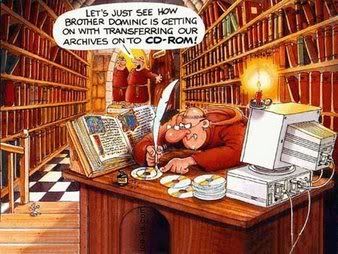
Last Saturday at the Cathedral of Saint Mary of the Assumption in San Francisco, I was part of the choir for the archdiocese’s Jazz Mass celebrating the feast of St. Francis. The choir was made up of the gospel choir from the parish of St. Paul the Shipwreck and students from Sacred Heart Cathedral Preparatory high school in San Francisco. On Wednesday, I shared faith with the students of the Institute for Leadership in Ministry. And on Thursday and Friday, I spent six class periods with the teens from St. Lawrence Academy High School in Santa Clara, teaching them about liturgy and symbols.
What all these groups did this week is remind me that the Gospel is only “the Good News” if it actually sounds like “good news” for the people who hear it. A gospel choir knows that worship that is lifeless is not good news for people who feel depressed, alone, numb, or dead. Lay leaders of the church who grapple daily with raising children, keeping marriages together, paying the bills, coming out, falling in love, finding a job, being overworked and overstressed, don’t need purified preaching devoid of their stories. They yearn to hear the Church name and claim the Good News at work in their messy, broken, imperfect yet holy lives. And teens who have their own unique lifestyle, culture, and language constantly challenge us to let go of our “we’ve-always-done-it-this-way” and “when-I-was-your-age” attitudes so that we can speak the Gospel in new ways that make sense for their generation.
Look at how Jesus preached the gospel. To the hungry, good news was food, so he fed them. To the sick, good news was healing, so he touched them and made them whole. To the outcast, good news was companionship, so he ate with them. To the lowly, good news was recognition and respect, so he welcomed them and named them holy and blessed. Jesus didn’t force-feed these people a pre-made message conformed to his standards of what he thought was good news. He entered into a relationship with them, asked them what they were looking for, gave it to them in a way that looked and sounded like good news for them, and that he named the “reign of God.”
Seeking new ways to preach the Gospel is not a new thing in the Church. The Gospel writers themselves knew their audiences and wrote the narrative of Christ’s life, death, and resurrection in ways that made sense for their hearers. When North American Indians were being persecuted and enslaved by European armies in the 16th century for not accepting the Gospel, Dominican friars questioned if the Europeans were even preaching the Gospel in a language that the Indians understood. They were not, and so it was not the Indians but the Church that was at fault because they merely talked without really trying to communicate. And in the 20th century, Vatican II understood that “when the liturgy is celebrated, something more is required than the mere observance of the laws governing valid and lawful celebration; it is also [the] duty [of pastors] to ensure that the faithful take part fully aware of what they are doing, actively engaged in the rite, and enriched by its effects” (Constitution on the Sacred Liturgy, 11). Thus, the Word of God must look like, sound like, smell like, feel like, and taste like good news for a 20th century world.
Yet even now, the world has changed since 1962 and the opening of Vatican II, and so must the ways we preach the Gospel change. For example, it is simply a reality in our 21st century American society that if you are not somehow connected to the Internet, if you don’t have email, or if you don’t know how to navigate the world wide web, you cannot really be in tune with the world that most people under 30 occupy. If the only place we try to connect with this internet generation is in church, while most of them are hanging out at Starbucks, IM’ing their friends on their computer, and text messaging on their cells, then we’re just talking but not communicating.
Especially here in the Silicon Valley, the birthplace of the personal computer, if we are to preach the Gospel so that it sounds like good news for the younger generation, the church must be where they are. We must learn their ways of communicating, understand the unique struggles they encounter, and be an interconnected web that bridges their real-life stories with the Gospel story.
This week in DSJ Liturgy Notes, you’ll find:
- What the Pope Says about the Internet
- Liturgist and Clergy Day Study Day with Fr. Ed Foley - November 5
- Music Ministers Workshop with Fr. Ed Foley – November 5
- Liturgical Ministers Study Day with Fr. Ed Foley – November 6
- The Opening of Vatican II, 42 Years Ago
- A 500-Year Divide Between Catholics and Lutherans
- Lutherans and Catholics Celebrate Together - October 31
- We Need Singers! - October 31
- Sample Intercessions for October 10, 2004
During this long weekend when we remember Columbus' search for a new land, let us continue the search for new ways and places that the good news can be heard and understood.
Diana Macalintal
Associate for Liturgy
No comments:
Post a Comment